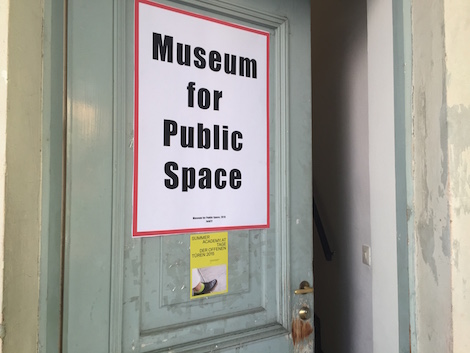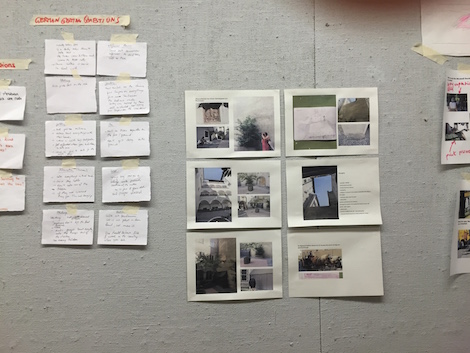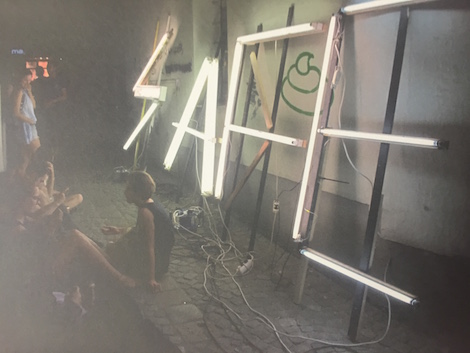| « 17 / 30 They were like animals | 15 / 30 Fact-based Funny » |
16 / 30 Mental Maps
Yes, form follows function.
But whom does function follow?
Does it follow the people constituting a space?
Or those governing it?
Yes, form follows function.
But while utopia wanted new men, capital wants new circuits.
While utopia imagined the future, capital imagines the absolute present.
Is there time today to follow?
Yes, form follows function.
But once in place, which one remains?
Which one erodes faster?
Use(r) or (infra)structure?
When talking with feld72 I get the impression that public space is at the same time hyper-fragile and one of the most robust continuities of human civilization. This weekend their new museum has opened its doors in Salzburg. Only for one day, though, as it is a nomadic museum: the museum for public space.

You could find it in the abandoned former Baroque Museum at Mirabellplatz. Once you entered an inconspicuous door next to the place where the Sound of Music tours start, you would not find artworks at first. Rather you would make your way through the extensive documentation of the group’s research on public spaces in Salzburg. On countless photos, texts and maps, you find the story of a Peruvian Mozart mime dressing up for his performance. A Syrian refugee who is sitting everyday at 14:00 at the same spot to wait for his bus after his German class. A Salzburger who avoids the inner city during the day, because of the tourists.

Their aim of feld72's class was not only to explore the physical public sites of the inner city, but also ‘mental maps’. This is what Michael Obrist calls the actual public space. The protocols, habits and invisible borders that different individuals and groups act out in public. What do people actually do in public? What do they avoid? How do they use what is there? The class collected observations of all kinds through the practice of “extensive hanging out”.
These mental maps were documented and became the point of departure for the artistic interventions of the students. Like Mihai Teodorescu’s work Safe that also manifests with a mental map. The artist from Bucharest built a neo-light installation for Königsgässchen, a small obscure alley in the centre that lies aside the main tourist routes.

“It is about different layers of security, of how one perceives it. For me it starts with a nice and cosy feeling generated by the presence of light in an otherwise dark street. It is also about the ‘Western promise’ that everything will be ok as soon as you arrive, all life questions will be answered and the future secured for a longer period of time, different from the day-to-day struggle from back home.”
Teodorescu’s work shows that mental maps are subjective and connect places and longings. They are psycho-topographies that show how places are connected through bodies, material and feelings: like the back alley in Salzburg with the ‘Western promise’ of a street in Bucharest.
Mental maps are as ephemeral as the artistic interventions of the students. They change with the people that constitute a public space. The interventions of the feld72’s class are thus only momentary manifestations of an invisible cultural and emotional infrastructure that governs how we move through cities as much as physical streets and buildings.

